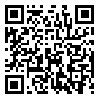Volume 25, Issue 3 (2022)
mjms 2022, 25(3): 32-35 |
Back to browse issues page
Download citation:
BibTeX | RIS | EndNote | Medlars | ProCite | Reference Manager | RefWorks
Send citation to:



BibTeX | RIS | EndNote | Medlars | ProCite | Reference Manager | RefWorks
Send citation to:
Rezaei M, Heidari N. Deep Brain Stimulation for Epilepsy. mjms 2022; 25 (3) :32-35
URL: http://mjms.modares.ac.ir/article-30-75197-en.html
URL: http://mjms.modares.ac.ir/article-30-75197-en.html
1- Department of Physiology, Faculty of Medical Sciences, Tarbiat Modares University, Tehran, Iran
Abstract: (813 Views)
Novel antiepileptic drugs (AED) are now available. However, many epileptic patients still find the condition difficult to handle. Drug therapy does not work for about one-third of the cases and not all people who will benefit from surgery. The use of electric current as a treatment option has emerged since the late twentieth century. Inhibition of synapse activity is a way that low-frequency stimulation (LFS) prevents epileptic activity. It will enhance the endocytosis of AMPA-type glutamate receptors and activate calcineurin, thereby leading to long-term depression (LTD). High-frequency stimulation (HFS) also contributes to the control of epilepsy by increasing the membrane permeability of neurons. Nonetheless, the detailed mechanisms responsible for these effects are still unknown. More research is required to fine-tune electrical stimulation parameters and yield better results in epilepsy patient care.
Keywords: epilepsy, deep brain stimulation, low-frequency electrical stimulation, high-frequency electrical stimulation
| Rights and permissions | |
 |
This work is licensed under a Creative Commons Attribution-NonCommercial 4.0 International License. |







